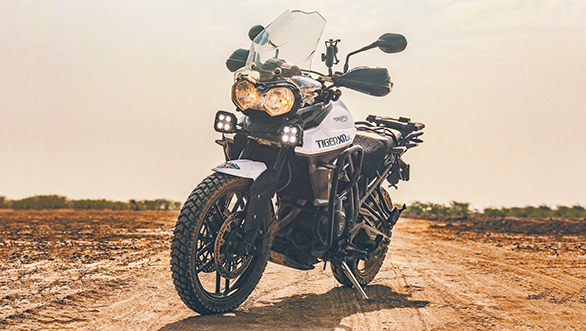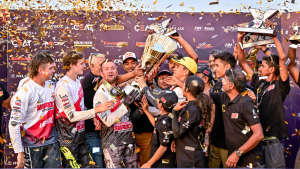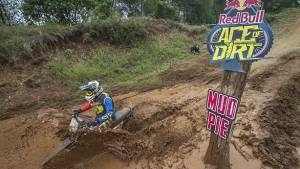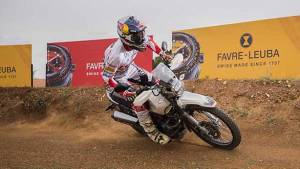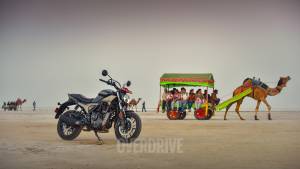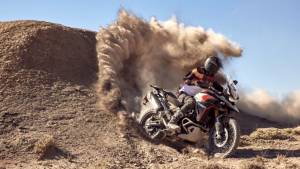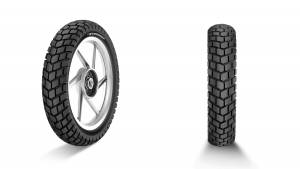Master Class: Learning Off-road tricks with CS Santosh at Big Rock Dirt Park
Do you know that feeling when you see your 'hero'? When you see an action star pulling off those cool moves on a motorcycle, fighting bad guys and then doing the victory walk in slow motion? I felt like that's exactly what I experienced when I met CS Santosh. He was his dapper self, answering all our questions related to Dakar 2020, the Xpulse 200 and also elaborating on his association with the second-oldest Swiss luxury brand in the world, Favre-Leuba. We drove down to Kolar, around 90km away from Bangalore, to the Big Rock Dirt Park. The facility is essentially CS Santosh's playground, on which he has been practicing for years to prep for Dakar and other off-road championships. The track layout has both easy and complicated sections for different levels of riders. And Big Rock offers a fleet of Honda CRF 230s, kit like helmets, elbow and knee guards and riding boots of different sizes.
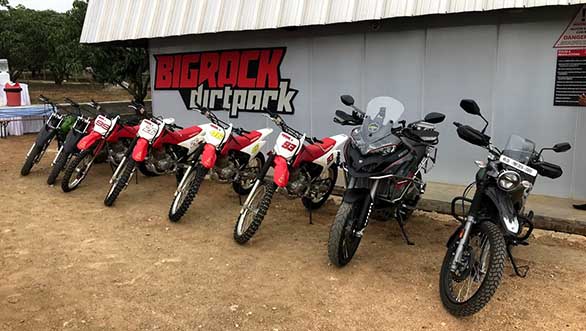
With Favre-Leuba launching the Raider Sea Sky chronograph line at Rs 2.63 lakh at this venue, we were in for some luck. This was because CS Santosh was going to teach us a thing or two about off-road riding. Given the situation, who's going to complain about a working weekend? After getting kitted up, I swung a leg over the hardcore off-road bike, the Honda CRF 230, and was about to head out. And that is precisely when CS Santosh made an entry astride his enduro bike.
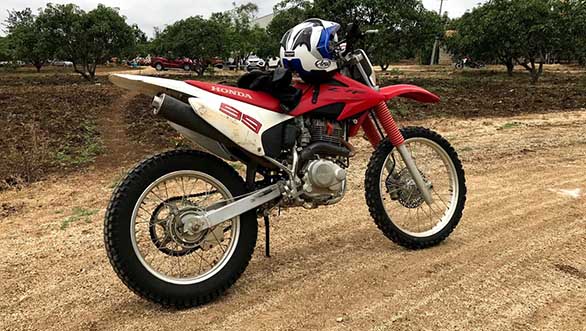
After exchanging some notes with his crew at Big Rock Dirt Park, Santosh picked up his Hero Xpulse, in a shade that matched his racing overalls, and headed to the first obstacle course. I observed with rapt attention, since it isn't everyday that a Dakar hero, who has won multiple motocross and dirt track events, is on hand to share his off-road knowledge with anybody.
The first aspect that CS decided to address, was how one positions oneself on an adventure/off-road motorcycle, which he assured us was very different from what one does on a race machine. "When you want to go off-road, the position of the motorcycle is important. When I talk about the position, it is very broad, but weight plays an important role when you are riding off-road," he said. He then climbed onto his Xpulse and demonstrated how the upper half of the body should be left loose, while the bike needed to be gripped with the lower half, for ease of manoeuvring. Santosh also explained how one's head needed to be above the handlebar, while the elbows need to be raised and perpendicular to the body, the back remaining straight. The knees should be folded while the balls of the feet should be on the foot pegs. This position, similar to that of deadlift done in gyms, ensures maximum control and low fatigue, he told us.
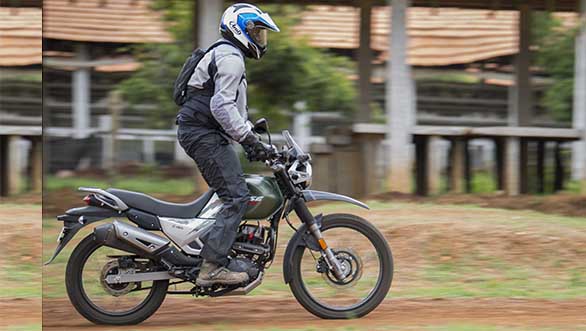
After getting the position right, it was time to ride through the first obstacle challenge, the slalom course. CS demonstrated it by crossing 12 cones in no time, easy-peasy. As soon as I entered the course and passed a few cones, unlike CS, I stalled! Perfect way to make a first impression in front of the master himself. However, CS explained the two mistakes that I made. One was entering the section at a higher speed, affecting braking. And the second was looking down at the immediate obstacle. One has to keep the final point in sight, he explained, as it helps navigating obstacles and planning manoeuvres better. After a couple of reruns, I finished the slalom course without any hiccups. Onto the next course then.
"When it comes to braking off-road, people are often on the edge because they don't know how much braking force to apply. Is it similar to when you're at a racetrack? How much force do you apply on the front brake, and on the rear? These are questions that I get asked often," he told us.
"When you are riding a motorcycle on the track or off the road, the braking principle is similar. All the stopping power is in the front. If you want to stop that motorcycle, you should be able to use the front brake. But how you use the front brake and where to use it, makes a difference."
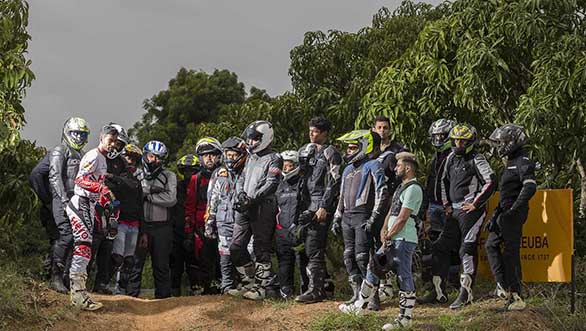
He further added, "When you are riding on a straight section, all the braking has to be done when the bike is upright. If you try to apply brakes and also enter a turn, you could end up washing out the front. You have to use 70 per cent braking in the front while the rear brakes should be applied only to change direction or have additional control on the bike. While riding off-road, there can be a situation where the front is off, that is when you push your body towards the back when you brake. Also, one should not grab the brake but squeeze it. Apply the pressure towards the end to avoid washing out," the off-road wizard instructed. The braking course had a simple straight section with two cones placed at the end, with some distance between them. The idea was to gas the bike till the first cone and then apply the front brakes primarily, with bare minimum use of the rear brakes. Also, for better control, CS insisted that we shift our body towards the rear of the motorcycle. On my first run, using only the front brakes was a tad difficult as the terrain was uneven and there was a constant fear of losing grip in the front. But then as I pushed my body to the rear, and then gradually applied the brakes, I had better control over the motorcycle.
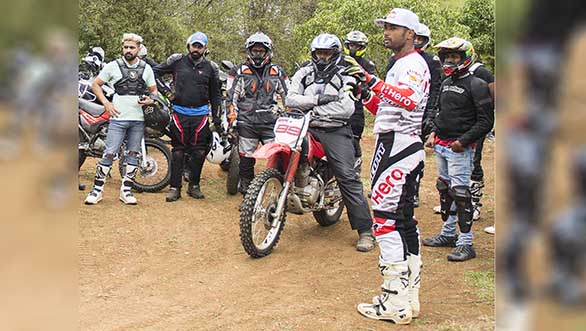
CS then explained, "Braking should happen before you reach a corner. You can't reach to the point of braking and then change position because in that case you are moving away from the motorcycle and adding more variables. Always plan your braking and then make the smooth transition of changing your body position." It was then time for the last lesson of the day, where we had to ride down an incline and then climb up a steep slope to get back out on the other side. CS said, "We will be learning about the position of the body which is really important when you are making a climb. Additionally, we will also learn about clutch control and how much power it takes to make that climb."
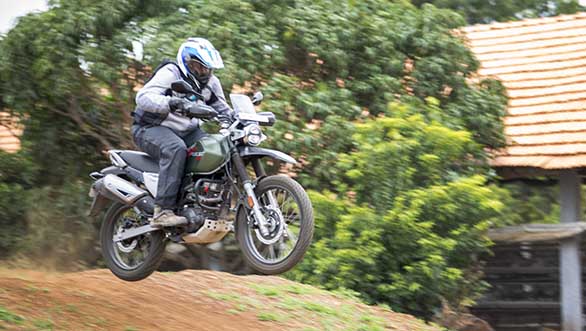
It was only when we were all lined up on the edge of the downward slope, that the magnitude of just how steep it was dawned on us. "Sometimes some obstacles look bigger than they actually are when you ride over them," he said. Pointing towards the drop, CS mentioned, "This is not something that you should be scared of as it is fairly easy and simple. It just needs the correct body posture to do it. When you are braking on the slope, you should move your body back. The whole point is to not load the front too much so it doesn't wash away. At the same time, you could also end up falling over the bike. You should work in tandem with the motorcycle and not work against the forces of the motorcycle. Use all the forces that the motorcycle generates in your favour. And then when you start climbing, move your body weight towards the front while maintaining a steady throttle."
With all the lessons and instructions, I got ready for the final challenge. This was important for me as I did not want to goof up in front of India's number one off-road rally raid rider who taught us the basics in the simplest way possible. Body position...check, throttle position...check, game face..you bet! I started my descent gradually and made sure that I was gentle on the brakes. With the newly acquired confidence, there was no fear of the loose gravel. As soon as the climb started, I stood up in the deadlift position and went gentle on the throttle to reach the peak without making any mistakes. Finally, I was grinning from ear to ear. Time to bring all the lessons home by searching for trails on my Triumph Tiger.
